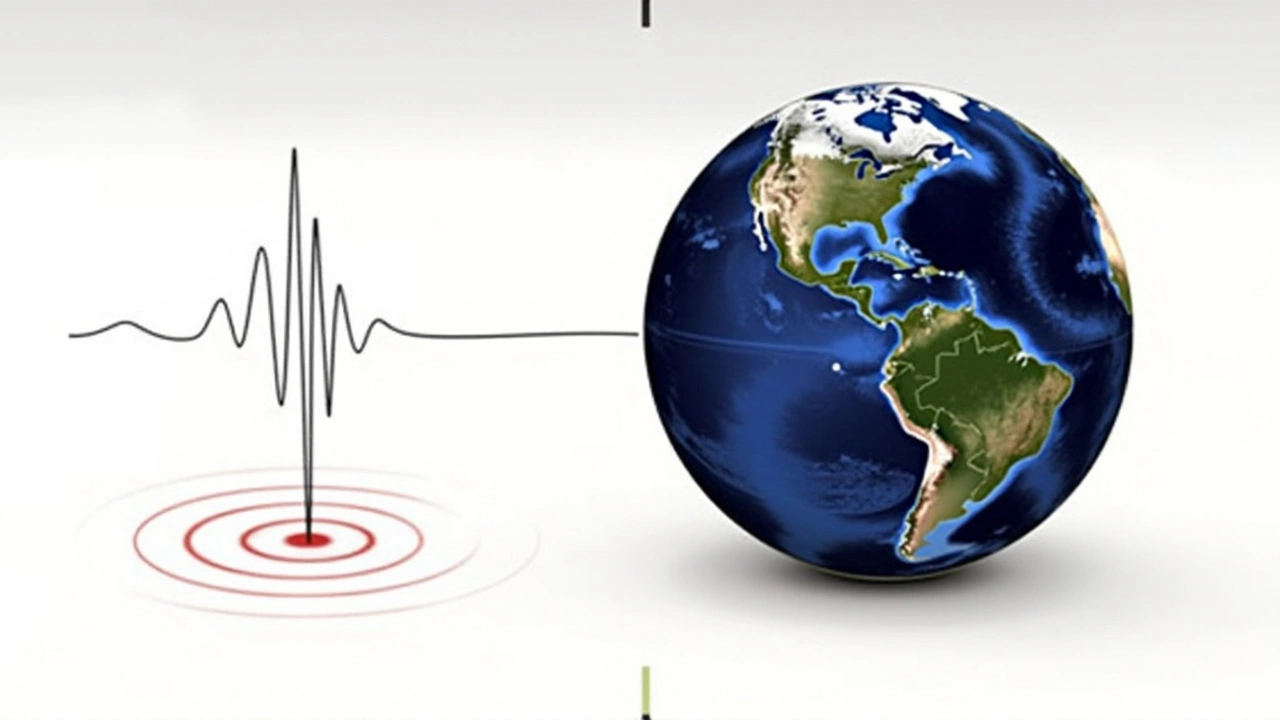Early Morning Quake Rattles Uttarkashi
In the calm morning hours of January 24, 2025, the usually serene district of Uttarkashi in Uttarakhand awoke to sudden tremors. The shaking began at precisely 08:19:28 IST, as noted by the National Center for Seismology (NCS). The earthquake, which registered a magnitude of 3.5 on the Richter Scale, originated at a shallow depth of just 5 km beneath the earth’s surface. With the epicenter situated at the coordinates of 30.85 N latitude and 78.60 E longitude, the community was jolted from their morning routines into a state of urgency.
The impact of the quake was sufficient to strike concern across the district. Residents, who are no strangers to the occasional seismic activity given the region's tectonic nature, nonetheless found themselves in a flurry of activity, abandoning homes and buildings in a rush to seek the safety of open spaces. The tremors were distinctly felt, rekindling discussions on the preparedness of infrastructure and communities in this mountainous region, which lies within one of the most seismically active zones of India.
Response and Reporting
In the immediate aftermath of the quake, local disaster relief protocols were hastily reviewed, though fortunate circumstances ensured they were largely unnecessary. As of this report, there have been no incidents of casualties or property damage directly attributed to this seismic event, a testament possibly to both the hardiness of local structures and perhaps sheer luck. Authorities have been quick to reassure residents, and a series of assessments have been implemented to ascertain any potential aftermath threats, including landslides that could be triggered by even slight movements in such a terrain.
Insights from the National Center for Seismology
The National Center for Seismology confirmed the earthquake details through a succinct yet informative post on their social platform, formerly known as Twitter, now rebranded as X. The post provided crucial seismic data, outlining the quake’s magnitude, location, timing, and depth. Such transparency and prompt communication reflect growing efforts to keep the public informed while also ensuring that awareness is raised about the region's seismic activity patterns. Simultaneously, it underscores the importance of understanding these geological phenomena in a locality that frequently experiences rumblings beneath its geologically tumultuous surface.
Preceding Quake and Seismic Patterns
Adding to the morning’s extraordinary series of events, earlier at 7:41 am, Uttarkashi experienced another, though less forceful, earthquake with a magnitude of 2.7. While significantly less impactful, its occurrence presents an opportunity for scientists and seismologists to study the implications of these consecutive tremors. Such research could be invaluable in unlocking patterns or predicting future activity, offering essential insights into the pressure changes occurring within the Indian Plate's interactions. It's these underpinnings that define the region's geological unpredictability, continuously evolving due to the dynamic nature of tectonic movements.
Community Resilience and Future Preparedness
Despite the initial fear prompted by the tremors, the event has also showcased the resilience of the Uttarkashi community. Amidst the natural disturbance, the sight of residents rallying together in solidarity was heartening. It reaffirms community spirit, providing a layering of strength against the unpredictable challenges posed by nature. However, it also brings to light the critical discourse on improving emergency preparedness. As seismic experts and local authorities work in tandem, future preparedness strategies are becoming an overriding priority, emphasizing the need for pervasive education initiatives, efficient communication channels, and the continual reinforcement of infrastructure to withstand such events.
Understanding Seismic Risks in Uttarakashi
Uttarkashi’s seismic narrative is deeply entrenched in its geographic and historical context. Nestled in the heart of the Himalayas, the region sits atop converging tectonic plates – a phenomenon that underlies the region's beauty and its peril. These geological forces shape the morphology of this landscape, contributing not just to the iconic mighty peaks but also to its seismic volatility. Monitoring these activities provides a glimpse into the complex and active crustal processes that are a hallmark of the greater Himalayan region.
Historically, Uttarakashi has experienced several significant seismic events, instilling a cautious yet informed perspective amongst its inhabitants. Learning from past experiences ensures that the knowledge informs current planning and reinforces the need for proactive adaptations to ensure safety and minimize risks. As the district continues to explore and refine its approach to handling such natural disasters, a comprehensive strategy that integrates scientific research with community action stands as the keystone for enhanced future resilience.
The morning's events are a reminder of the power and unpredictability of mother nature, signaling not just a call to reinforce structures but also a call to arms for continued education, preparation, and the fostering of understanding about the natural world that surrounds, nurtures, and challenges us.
